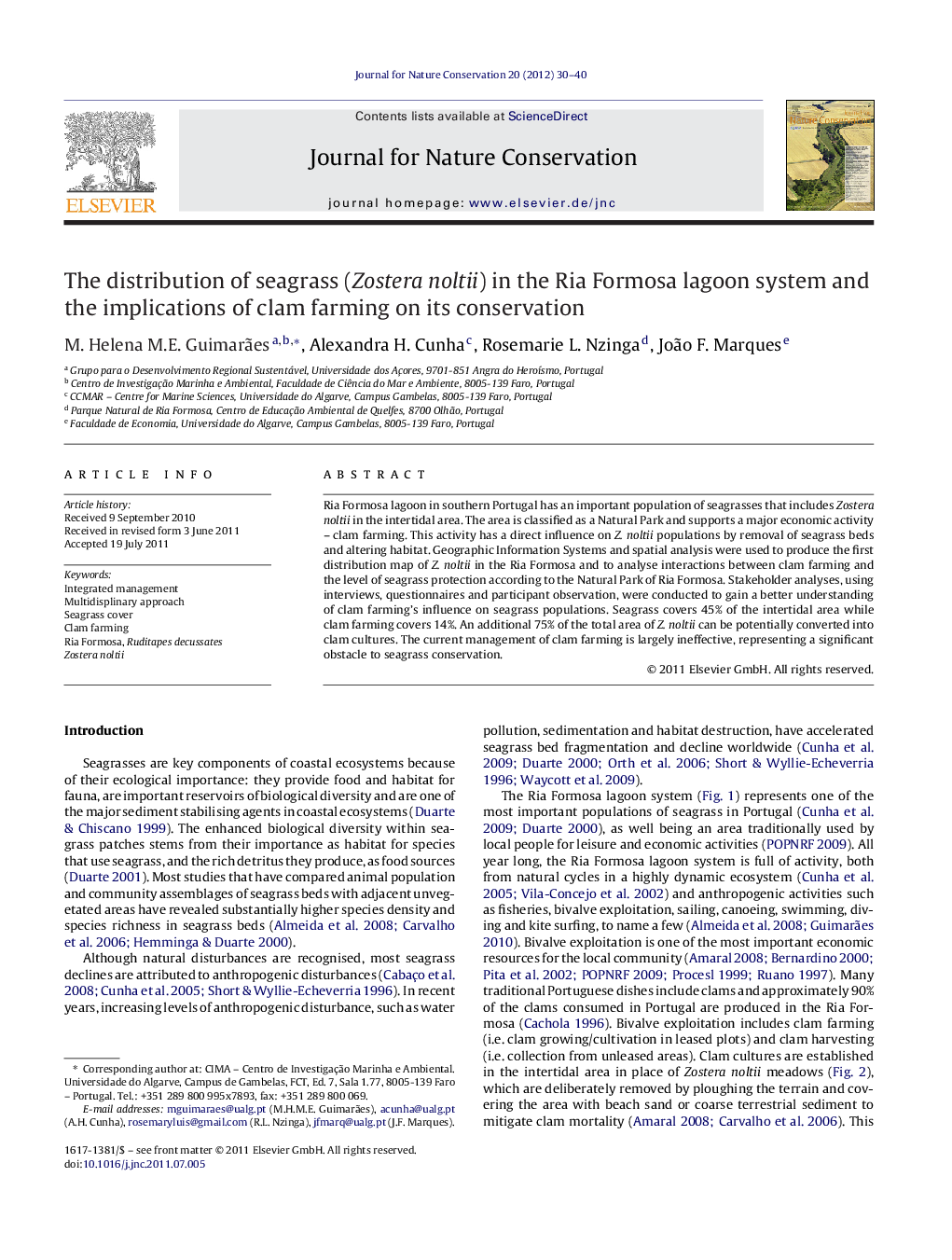| Article ID | Journal | Published Year | Pages | File Type |
|---|---|---|---|---|
| 4399963 | Journal for Nature Conservation | 2012 | 11 Pages |
Ria Formosa lagoon in southern Portugal has an important population of seagrasses that includes Zostera noltii in the intertidal area. The area is classified as a Natural Park and supports a major economic activity – clam farming. This activity has a direct influence on Z. noltii populations by removal of seagrass beds and altering habitat. Geographic Information Systems and spatial analysis were used to produce the first distribution map of Z. noltii in the Ria Formosa and to analyse interactions between clam farming and the level of seagrass protection according to the Natural Park of Ria Formosa. Stakeholder analyses, using interviews, questionnaires and participant observation, were conducted to gain a better understanding of clam farming's influence on seagrass populations. Seagrass covers 45% of the intertidal area while clam farming covers 14%. An additional 75% of the total area of Z. noltii can be potentially converted into clam cultures. The current management of clam farming is largely ineffective, representing a significant obstacle to seagrass conservation.
